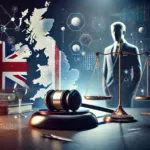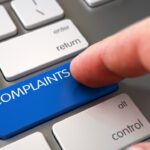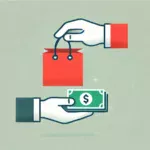In today’s digital age, the boundaries of intellectual property can often seem blurry, especially for those unfamiliar with the intricacies of copyright law. Understanding copyright infringement is essential for content creators, businesses, and individuals who regularly interact with intellectual property online or in other mediums. Copyright law exists to protect the rights of creators over their original works, but infringement can occur, often unintentionally, when these rights are violated. This article will break down the basics of copyright infringement, provide guidance on how to avoid it, and explore ways to ensure compliance with intellectual property law.
What is Copyright and Why Is It Important?
Copyright is a form of intellectual property protection that grants the creator of an original work exclusive rights to its use and distribution. These rights typically cover various forms of expression, including literature, music, art, photography, and software. The primary goal of copyright law is to incentivize creativity by giving creators control over their work and the ability to profit from it.
Intellectual property law for beginners can seem overwhelming at first, but copyright laws are designed with fairness in mind—balancing the interests of creators and the public. It prevents unauthorized use of a work, ensuring that creators are compensated for their efforts and creativity.
Without copyright protections, creators would have little motivation to produce new works, knowing others could freely use or profit from their creations without permission.
Defining Copyright Infringement
Copyright infringement occurs when someone uses a work protected by copyright without the owner’s permission. This can include reproducing, distributing, displaying, or performing the work without proper authorization. Infringement can also take the form of creating derivative works (such as adaptations or remixes) without consent.
Copyright infringement isn’t limited to blatant piracy; it can also arise in more subtle ways. For example, reposting a photo you found online without crediting the photographer or using part of a song in a video without obtaining the appropriate license could result in a claim of copyright infringement.
To simplify:
- Direct infringement: Copying or using a work without permission.
- Contributory infringement: Assisting or encouraging others to infringe on a copyright.
- Vicarious infringement: Benefiting financially from someone else’s infringement while having the ability to stop it but failing to do so.
The implications of understanding copyright infringement are vital for businesses and individuals alike, as infringing on someone’s copyright, even unknowingly, can lead to legal and financial consequences.
How to Avoid Copyright Infringement
The good news is that avoiding copyright infringement isn’t as difficult as it may seem. With the right knowledge and practices, individuals and businesses can steer clear of potential legal issues while respecting the rights of creators.
1. Use Licensed Content
One of the safest ways to avoid copyright infringement is to use content that comes with a clear license. Many creators release their work under licenses such as Creative Commons, which allows users to use the work under specific conditions (e.g., giving credit or not using it for commercial purposes). Understanding the terms of these licenses is essential to using the work legally.
2. Create Original Content
The best way to avoid infringing on someone else’s copyright is to produce your own work. Whether it’s a blog post, video, or piece of music, creating original content ensures that you own the rights. This is especially important for businesses developing marketing materials, as using copyrighted images or music without permission can lead to costly legal battles.
3. Obtain Permission
If you want to use someone else’s work, the safest course of action is to obtain explicit permission. This can often be done by reaching out directly to the copyright holder and negotiating a licensing agreement. Many copyright holders are willing to grant permission in exchange for credit or a licensing fee.
4. Understand Fair Use
Fair use is a legal doctrine that allows limited use of copyrighted material without permission, under certain conditions. This is typically applied to purposes such as commentary, criticism, news reporting, education, or research. However, fair use is a gray area, and determining whether a specific use qualifies can be complicated. Factors considered in fair use include:
- The purpose and character of the use (commercial vs. non-commercial)
- The nature of the copyrighted work
- The amount of the work used
- The effect of the use on the market value of the work
Fair use is an important aspect of intellectual property law for beginners to grasp but should be approached cautiously.

Real-World Examples of Copyright Infringement
To better illustrate the complexities of understanding copyright infringement, consider the following real-world examples:
- Napster: In the early 2000s, Napster was a file-sharing service that allowed users to share and download music for free. Major record labels sued Napster for copyright infringement, leading to the platform’s shutdown. Napster’s case is an example of direct copyright infringement because users were sharing copyrighted songs without the necessary licenses.
- Richard Prince vs. Patrick Cariou: Richard Prince, a well-known appropriation artist, used photographs from Patrick Cariou’s book without permission in a series of paintings. Cariou sued for copyright infringement, and although Prince argued that his work fell under fair use, the case was settled in Cariou’s favor, highlighting the dangers of misinterpreting fair use.
Consequences of Copyright Infringement
Copyright infringement can have serious consequences, including financial penalties, legal fees, and reputational damage. In the U.S., statutory damages for copyright infringement can range from $750 to $30,000 per work infringed, and in cases of willful infringement, penalties can go up to $150,000 per work. Additionally, courts can issue injunctions to stop further infringement and order the destruction of infringing materials.
Beyond the legal and financial repercussions, infringing on someone else’s copyright can damage a brand’s reputation and lead to a loss of trust with customers.
FAQs: Common Questions About Copyright Infringement
Copyright protects original works of authorship, while a trademark protects brand names, slogans, and logos used in commerce.
Not necessarily. Even if no profit is made, using copyrighted material without permission can still be considered infringement.
Public domain works are not protected by copyright and can be used freely. This includes works for which copyright has expired or works explicitly placed in the public domain.
In most cases, copyright lasts for the lifetime of the creator plus 70 years. For works created by corporations, copyright protection lasts for 95 years from publication.
Giving credit does not exempt you from needing permission. You must still have authorization to use the work.
If accused, it’s important to take the claim seriously. Consult a lawyer to assess your legal options, which could include negotiating a settlement or disputing the claim.
Key Takeaways
- Understanding copyright infringement is crucial for anyone involved in creating or using intellectual property.
- Always seek permission or use licensed content to avoid infringing on copyrights.
- Fair use is a legal exception, but its application can be complex.
- Copyright infringement can result in significant legal and financial consequences.
- Creating original content or obtaining proper licensing is the best way to ensure compliance with copyright laws.
By following best practices, individuals and businesses can respect intellectual property rights and avoid the pitfalls of copyright infringement.
External Source Links:

Jonathan Hartley is a highly regarded senior criminal lawyer with over 15 years of experience in the UK legal system. He began his career at a prestigious law firm in London, where he specialized in both defense and criminal law. Known for his ability to craft compelling defense strategies, Jonathan has successfully represented clients in high-profile cases and earned multiple awards for his contributions to the field of law.
In addition to his legal practice, Jonathan is also an accomplished legal writer, contributing articles to top legal blogs and online platforms. His work not only provides valuable insights into legal matters but also meets Google’s E-E-A-T standards by delivering accurate, reliable, and trustworthy information to readers. Committed to legal ethics and public welfare, Jonathan actively participates in discussions on law and justice while educating the public through his writing.










